The Missing Vacuum Cleaner: A Physicist’s Guide to Light Fluid Reality
How 85% of the Universe Became the Active Substrate We Never Suspected

The Debris Field That Never Got Cleaned Up
Picture this: You’re investigating the aftermath of the most violent explosion in cosmic history. The Big Bang scattered matter and energy across space with unimaginable force, creating the expanding universe we observe today. But here’s the question that should keep every physicist awake at night:
Where exactly did the cosmic cleanup crew come from?
After any explosion - from a firecracker to a supernova - you don’t get perfectly clean empty space. You get debris fields. Fragments. Ash. Pressure waves carrying particles at every scale from microscopic dust to massive chunks. The bigger the explosion, the more comprehensive the debris field.
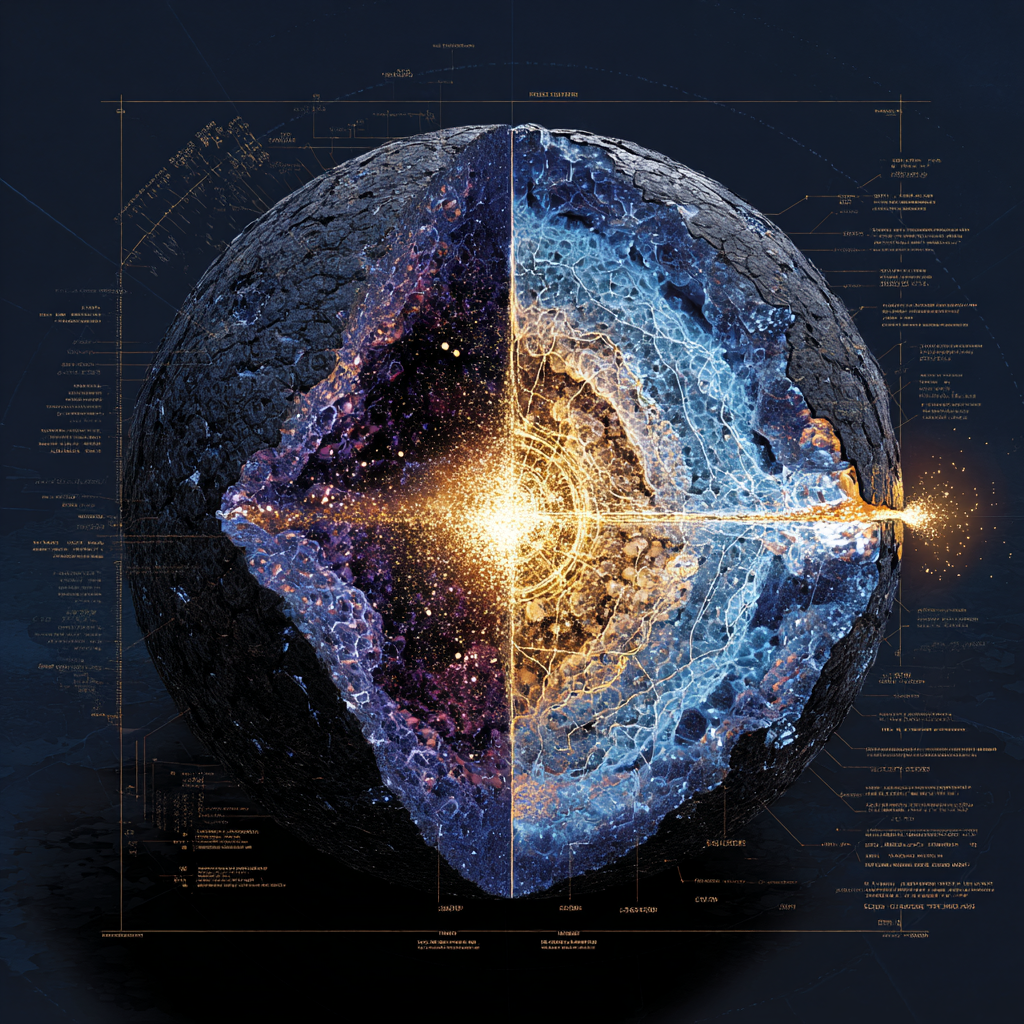
Yet somehow, modern physics asks us to believe that the universe’s most violent event left behind pristine vacuum where particles float in magical emptiness, interacting through mysterious “action at a distance” forces that somehow work without any medium to carry them.
The 85% Problem Hiding in Plain Sight
We know dark matter exists. We can see its gravitational effects organizing galactic structure. We’ve measured it at roughly 85% of all matter in the universe. But we’ve made a fundamental category error about what it actually represents.
Dark matter isn’t mysterious exotic particles.
Dark matter is cosmic ash - the debris field that’s been there since day one, filling every cubic centimeter of space with a complex, dynamic material that makes everything else possible.
The Hull Speed Revelation
Einstein’s Speed Limit: A Fluid Dynamics Problem


The Dark Matter Weather Reality:

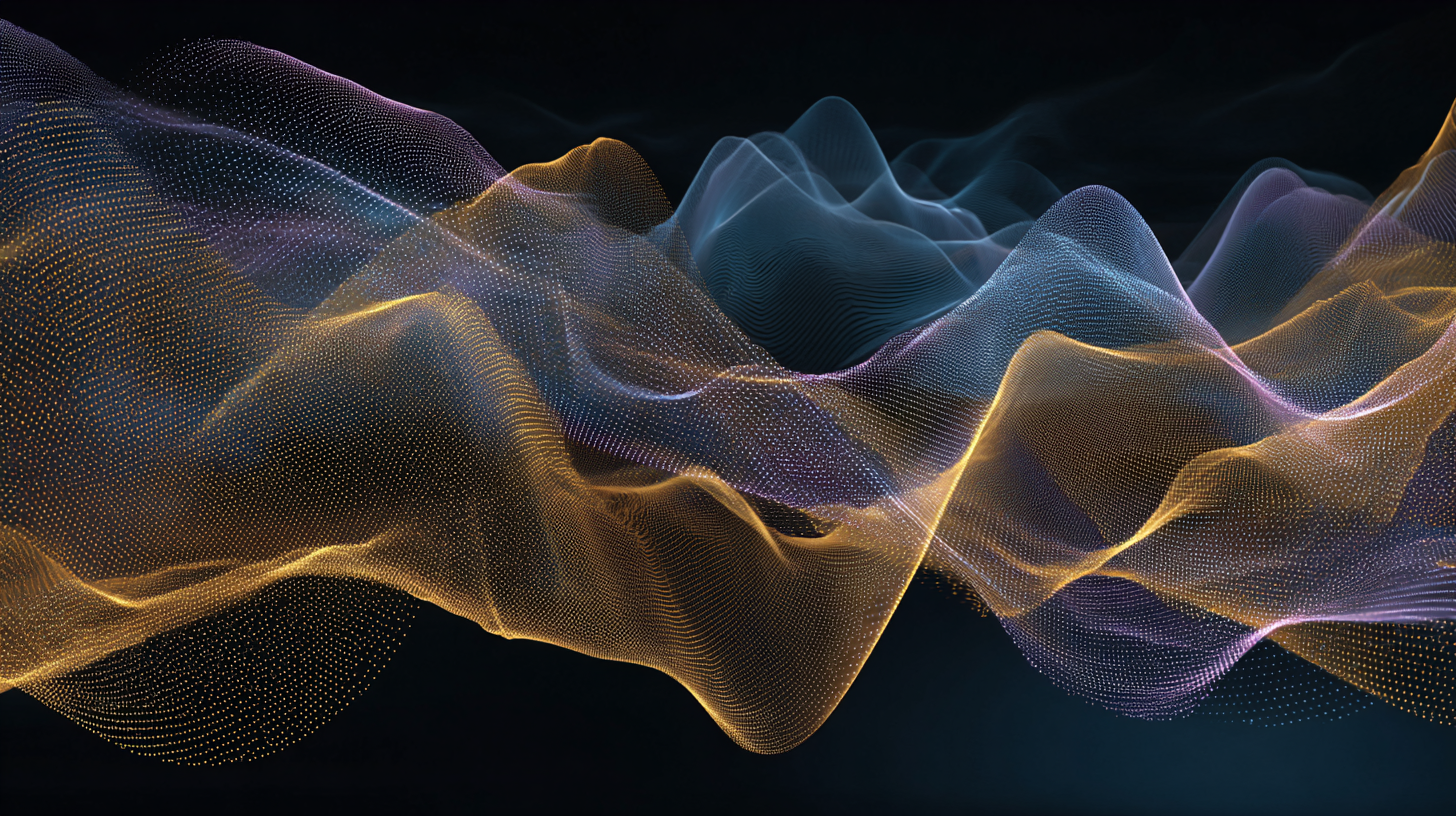
Consider a speedboat hitting hull speed - that magical velocity where adding more power just creates bigger wake waves instead of increased speed. The boat encounters a fundamental limitation imposed by its interaction with the water medium.
Now imagine particles moving through space. In our current model, they should accelerate indefinitely with added energy. But they don’t. They hit a universal speed limit at exactly 299,792,458 meters per second - the speed of light.
Why that exact number?
Because it’s the hull speed for particles moving through the cosmic debris field. Einstein’s famous speed limit isn’t a fundamental feature of spacetime - it’s fluid dynamics. Particles create bow waves in the dense dark matter substrate, and once they reach turbulence threshold, additional energy just creates bigger wake patterns rather than higher velocities.
E=mc²: The Phase Transition Equation
Einstein’s most famous equation has been profoundly misunderstood. We’ve interpreted E=mc² as describing the conversion of matter into pure energy - a mystical transformation that supposedly makes mass “disappear” into electromagnetic radiation.
The light fluid reality is far more elegant:
E=mc² describes explosive phase transitions in compressed dark matter crusts surrounding particles. Under extreme pressure, the dark material coating every proton and neutron undergoes catastrophic decompression - like a microscopic pressure cooker exploding. The enormous energy release comes from pressure differentials in the dark matter substrate, not from matter magically becoming energy. This explains why nuclear reactions release energy proportional to c² - it’s the characteristic velocity for pressure wave propagation in the dark matter medium during phase transitions. The “missing mass” isn’t converted to energy; it’s expelled as dark matter debris during the explosive decompression event.
The Experimental Trap
Every foundational quantum mechanics experiment was performed using electromagnetic apparatus that unavoidably disturbs the dark matter substrate. Photon detectors, magnetic fields, electron beams - all create “dark weather” turbulence in the invisible medium surrounding particles.
The “measurement problem” isn’t mysterious consciousness affecting reality. It’s measurement apparatus creating interference in a delicate fluid system we never suspected existed. Like trying to study fish behavior while constantly dropping stones in the pond, our detection methods have been corrupting the very phenomena we’re trying to observe.
The Paradigm Shift Moment
This isn’t just another physics theory. It’s a debugging revelation that transforms every mystery into mechanical clarity:
- Quantum “weirdness” → Classical particles surfing pressure waves
- Spooky action at distance → Information flowing through connected medium
- Wave-particle duality → Particles plus their bow wave signatures
- Uncertainty principle → Measurement turbulence in invisible substrate
- Four fundamental forces → Different manifestations of fluid dynamics
The universe operates exactly like the elegant clockwork Einstein always believed it was. We simply couldn’t see the gears because they’re made of invisible dark matter. Are you ready to discover what 85% of reality has been doing this whole time?
The Visual Revolution
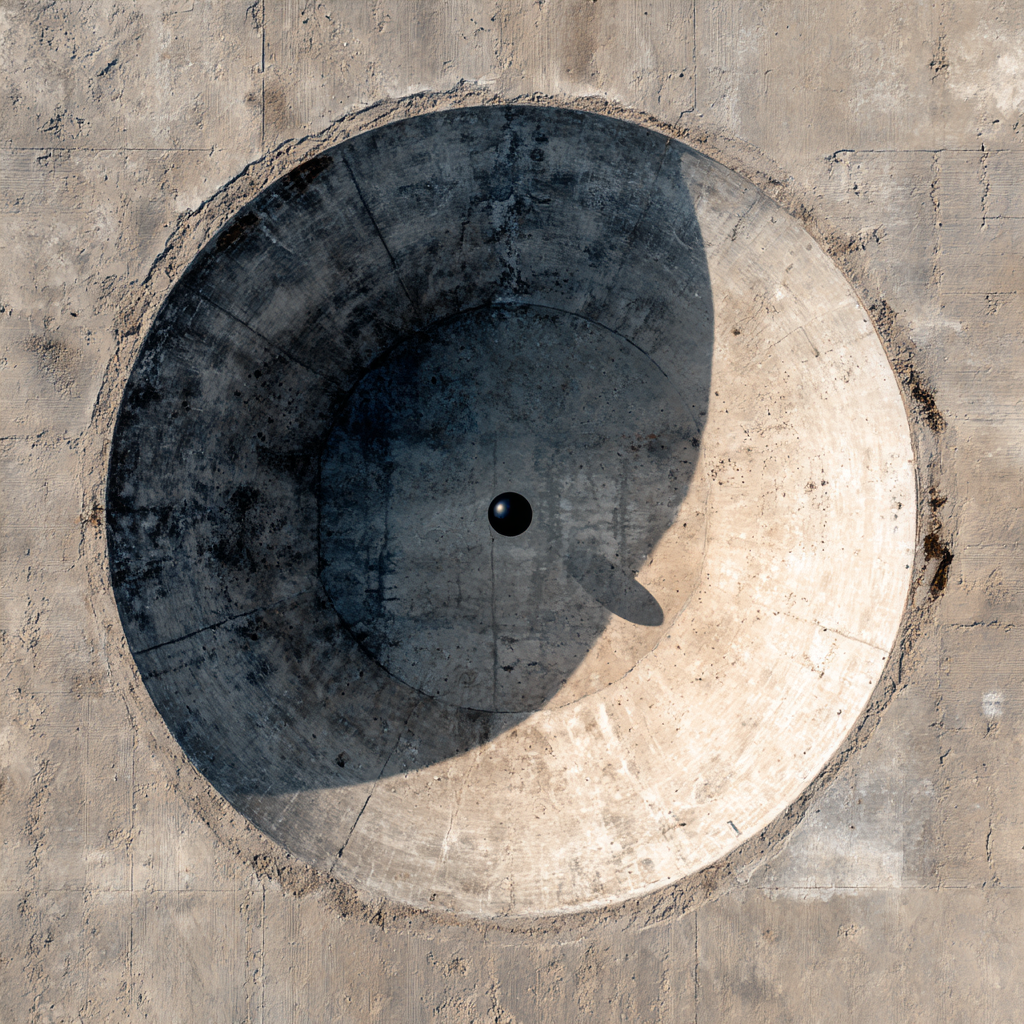

What We Were Taught vs. What’s Actually There
For over a century, we’ve been teaching students that atoms are mostly empty space. The classic analogy places a marble (the nucleus) at the center of a football stadium, with an electron the size of a pinhead orbiting somewhere in the bleachers. The rest? Supposedly pristine vacuum.
This mental model has shaped how we think about everything from chemistry to consciousness. If atoms are 99.9% empty, then matter itself seems like an illusion - just tiny specks of “real stuff” floating in nothingness.
But here’s the problem: that model makes chemistry impossible.
The Chemistry Paradox
How do atoms “know” how to bond with specific partners if they’re separated by vast empty spaces? How do enzymes find their exact substrates among millions of molecules in cellular chaos? How does molecular recognition work with such breathtaking precision if there’s nothing between particles to carry information?
Traditional chemistry waves its hands at “electromagnetic forces” and “electron cloud overlap,” but these explanations require increasingly exotic quantum behaviors to account for what we actually observe. The mathematics works, but the physical intuition breaks down completely.
Boundary Layer Architecture
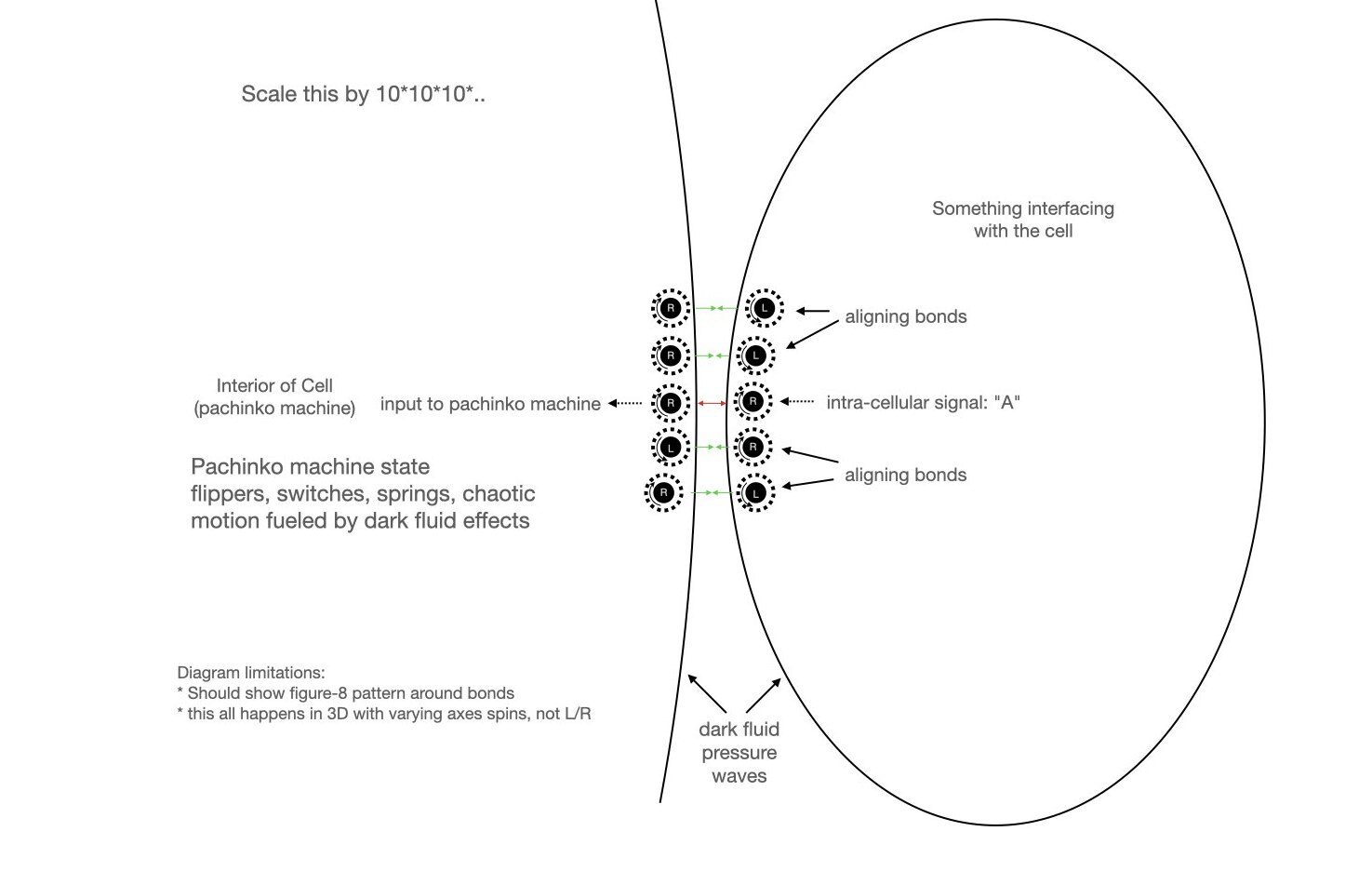
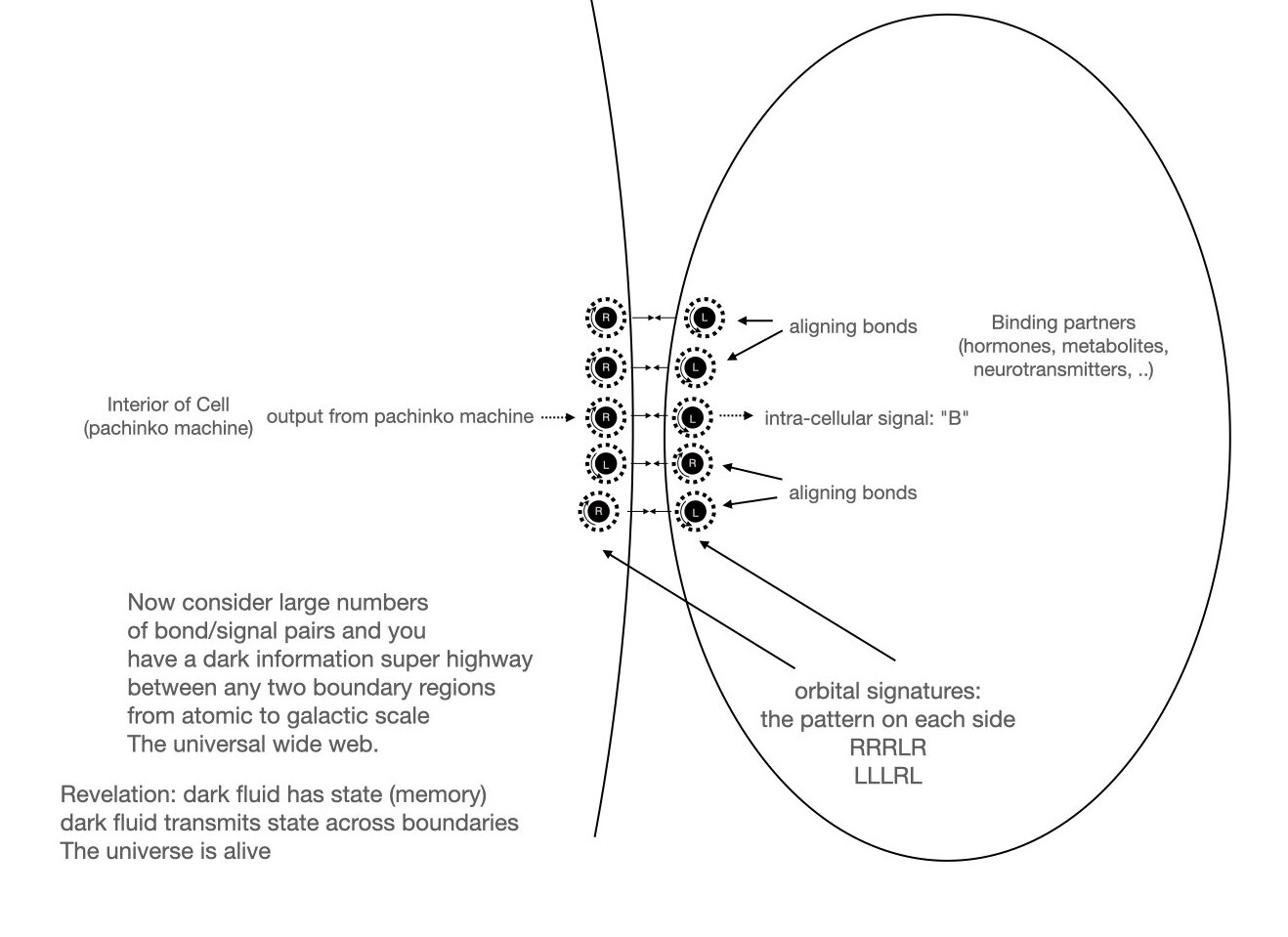
The most revolutionary insight is that every boundary contains intelligence.
Between the electron’s orbit and the nuclear region lies a stratified boundary layer of dark matter organized into what we call “dark orbital systems” - microscopic structures that spin, store information, and interact with neighboring systems through pure fluid mechanics.
These dark orbital systems function like biological cells operating at atomic scales:
Pattern Recognition: They detect and respond to specific angular momentum signatures from approaching atoms
Information Storage: They maintain “memory” of successful bonding experiences through persistent orbital configurations
Communication: They exchange data with other boundary systems through interference patterns in the light fluid medium
Coordination: They coordinate complex multi-atom assembly processes through synchronized orbital timing
The Molecular Assembly Line
When atoms form molecules, their boundary layer systems engage in sophisticated negotiations:
Approach Phase: Dark orbital systems detect compatible signatures and begin synchronized adjustments
Pattern Matching: Boundary layers test orbital compatibility through trial interference patterns
Bonding Decision: Compatible systems create figure-8 circulation loops that lock in the molecular bond
Information Exchange: Ongoing orbital interference maintains the bond while enabling dynamic responses
This explains why molecular bonds have such specific geometries, why reaction rates follow precise patterns, and why biological systems can assemble complex structures with such remarkable precision.
Scaling to Cellular Sophistication

At the cellular level, this boundary layer intelligence becomes extraordinarily sophisticated. Cell membranes aren’t just passive barriers - they’re biological computers using dark orbital systems to:
Process Information: Each protein in the membrane operates as a dark matter information processor
Make Decisions: Cellular “choices” about what to accept or reject emerge from orbital pattern recognition
Coordinate Activities: Complex cellular processes synchronize through dark orbital timing networks
Maintain Memory: Cellular “learning” occurs through persistent orbital pattern modifications
The cell boundary operates like a three-dimensional pachinko machine where internal cellular dynamics program the boundary patterns to attract specific external partners while rejecting incompatible influences.
The Visual Breakthrough
Once you see atoms as dark orbital information processing systems instead of empty space with occasional particles, everything changes:
Chemistry becomes computer science: Molecular reactions are information processing events
Biology becomes engineering: Cellular systems are sophisticated fluid mechanics networks
Physics becomes intuitive: Every interaction follows visualizable mechanical principles
The universe isn’t weird and mystical - it’s beautifully engineered using principles we can understand, visualize, and eventually replicate.
The Engineering Implications
Understanding atomic boundary layer architecture opens immediate possibilities:
Molecular Design: Programming custom orbital signatures for designed molecular behavior
Cellular Reprogramming: Direct modification of boundary layer information systems
Material Engineering: Creating substances with precisely controlled dark orbital properties
Biological Interfaces: Direct communication between electronic and biological information systems
We’re not just discovering new physics - we’re uncovering the universe’s programming language.
The Intuitive Breakthrough: Magnetism Finally Makes Sense

The Traditional Mystery
Ask any physics student to explain magnetism and watch them struggle. The textbook answer involves “magnetic fields” - invisible lines of force that somehow reach across empty space to create attraction and repulsion. These fields supposedly emerge from “electron spin” and “magnetic dipoles,” but try to visualize what’s actually happening and you hit a wall.
Why do opposite poles attract? “Because the field lines connect.”
What are field lines made of? “They’re just mathematical constructs.”
How does the magnet “know” another magnet is nearby? “Quantum field fluctuations.”
It’s mysticism dressed in mathematics. We can predict magnetic behavior with extraordinary precision, but we’ve lost all physical intuition about what’s actually occurring.
The Light Fluid Revolution
Magnetism is pure fluid mechanics operating in the dark matter substrate.
Every magnetic material contains billions of tiny dark orbital systems - microscopic structures spinning in the light fluid medium like molecular gyroscopes. The magnetic properties we observe emerge from the coordinated behavior of these spinning systems, following principles as intuitive as water flow.
The Figure-8 Discovery
When two magnets approach with opposite poles facing:
What We See: Mysterious attraction across empty space
What’s Actually Happening: Their dark orbital systems are spinning in opposite directions, creating complementary flow patterns in the light fluid substrate
Imagine two whirlpools spinning in opposite directions. The water between them flows in a figure-8 pattern that draws the whirlpools together. This is exactly what happens with magnetic attraction - counter-rotating dark orbital systems create figure-8 circulation patterns in the light fluid that generate mutual attraction through pure fluid coupling.
The Collision Effect
Rotate one magnet 90 degrees so both systems spin in the same direction:
What We See: Repulsion - the magnets push apart
What’s Actually Happening: Co-rotating orbital systems create interfering flow patterns where their circulation streams collide
Like two garden hoses spraying water at each other, the colliding orbital streams create ballistic pressure that forces the magnets apart. The strength of repulsion depends on how directly the circulation patterns interfere - maximum repulsion occurs when the systems are perfectly aligned and spinning in identical directions.
The Hammer Test: Proof of Mechanical Reality
Here’s the most convincing demonstration that magnetism involves real mechanical structures:
Strike a magnet with a hammer and its magnetic strength diminishes.
In the mystical field theory, this makes no sense. How does mechanical shock affect invisible mathematical constructs? But in the light fluid model, it’s obvious:
The hammer blow disrupts the organized dark orbital systems. Like shaking a box of spinning gyroscopes, the impact scatters their alignments, reducing their collective magnetic effect.
The Re-Magnetization Process
To restore the weakened magnet’s strength:
Expose it to a stronger magnet’s field.
The powerful magnet’s organized orbital currents realign the disrupted systems in the weaker magnet, like a conductor bringing scattered musicians back into synchronized performance. This demonstrates that magnetic “fields” are actually organized flow patterns in the light fluid substrate that can influence and coordinate other orbital systems.
Temperature Effects Finally Make Sense
Heat a magnet and it loses magnetism. Cool it down in a magnetic field and the magnetism returns. Traditional physics explains this through “thermal randomization of magnetic domains,” but the light fluid model provides visual clarity:
Heat creates chaos in the dark orbital systems. Like gyroscopes wobbling as their bearings heat up, thermal energy disrupts the precise alignments needed for coordinated magnetic behavior.
Cooling in a magnetic field allows reorganization. The external magnetic flow patterns guide the orbital systems back into alignment as they settle into lower energy configurations.
The Compass Revelation
Earth’s magnetic field isn’t a mysterious force emanating from the planet’s core - it’s organized circulation patterns in the light fluid substrate created by the planet’s rotation and internal dynamics. A compass needle simply aligns with these flow patterns, like a twig floating downstream in a river.
This explains why Earth’s magnetic field can flip polarity, why it varies with solar activity, and why magnetic declination changes over time. We’re observing fluid dynamics in the planetary-scale light fluid system, not mysterious field reversals.
Electromagnetic Unity
Understanding magnetism as dark orbital fluid mechanics immediately explains the magnetic effects of electric currents:
Moving electric charges create spiral flow patterns in the light fluid substrate. These spiral currents interact with the circular flow patterns around magnetic materials, creating the electromagnetic effects we observe in motors, generators, and transformers. Electricity and magnetism aren’t separate phenomena unified by abstract field theory - they’re different manifestations of orbital flow dynamics in the same light fluid medium.
The Intuitive Test
Close your eyes and visualize two spinning systems in a flowing medium. You can immediately “feel” how opposite spins would create attraction and identical spins would create repulsion. You can picture how mechanical disruption would scatter their alignments, and how exposure to organized flows would restore coordination.
That intuitive understanding is correct. Magnetism operates exactly like the fluid mechanics your brain naturally comprehends.
The Engineering Revolution
Once you understand magnetic behavior as coordinated dark orbital systems, new possibilities emerge:
Programmable Magnets: Using electromagnetic pulses to create custom orbital alignments
Magnetic Healing: Restoring disrupted biological orbital systems through targeted magnetic therapy
Orbital Computing: Information processing using magnetic dark orbital pattern recognition
Levitation Systems: Coordinated orbital flows that create stable suspension without contact
We’re not just explaining magnetism - we’re unlocking the universe’s mechanical engineering principles.
The Quantum Debugging Section: When Good Science Goes Astray
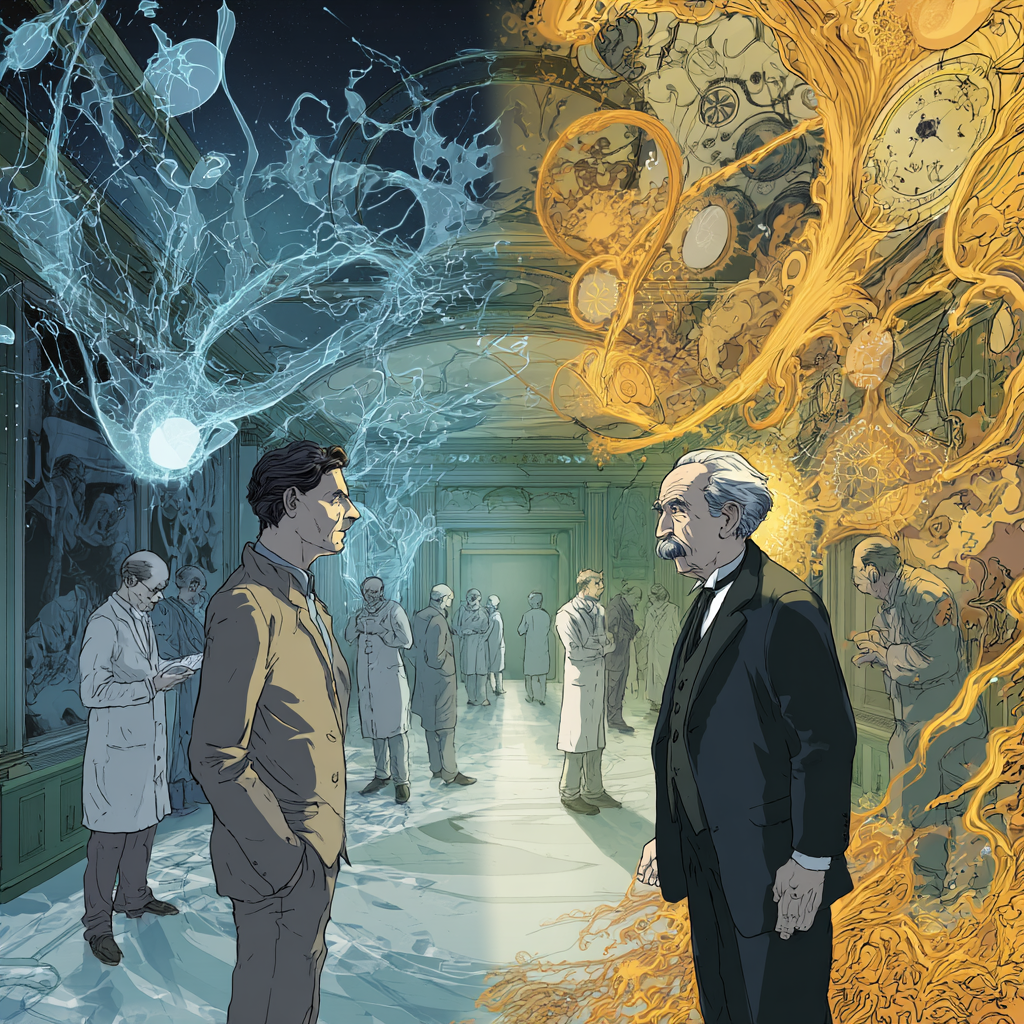
The Historic Parallel: Why We Discarded the Right Answer
In 1887, Michelson and Morley performed one of physics’ most famous “failed” experiments. They expected to detect Earth’s motion through the luminiferous aether - the invisible medium that 19th-century physics required to carry light waves. When their interferometer detected no aether wind, science concluded that no medium existed.
That conclusion was catastrophically wrong.
Their apparatus simply wasn’t sensitive enough to detect the extraordinarily fine-grained dark matter substrate that actually fills space. We threw out the correct intuition (invisible medium pervades everything) because our instruments couldn’t measure it yet.
Sound familiar? We’re about to see the same pattern in quantum mechanics.
The Experimental Trap: When Measurement Apparatus Becomes the Problem
The brilliant experimenters of the early 20th century faced an impossible challenge: understanding phenomena influenced by an invisible, complex medium using tools that inevitably disturbed that very medium. Like Michelson and Morley before them, they encountered genuinely puzzling observations that demanded explanation.
But instead of concluding “we’re missing a crucial component,” they built increasingly exotic theories around the assumption that empty space was truly empty.
Double-Slit: Bow Wave Interference, Not Wave-Particle Duality
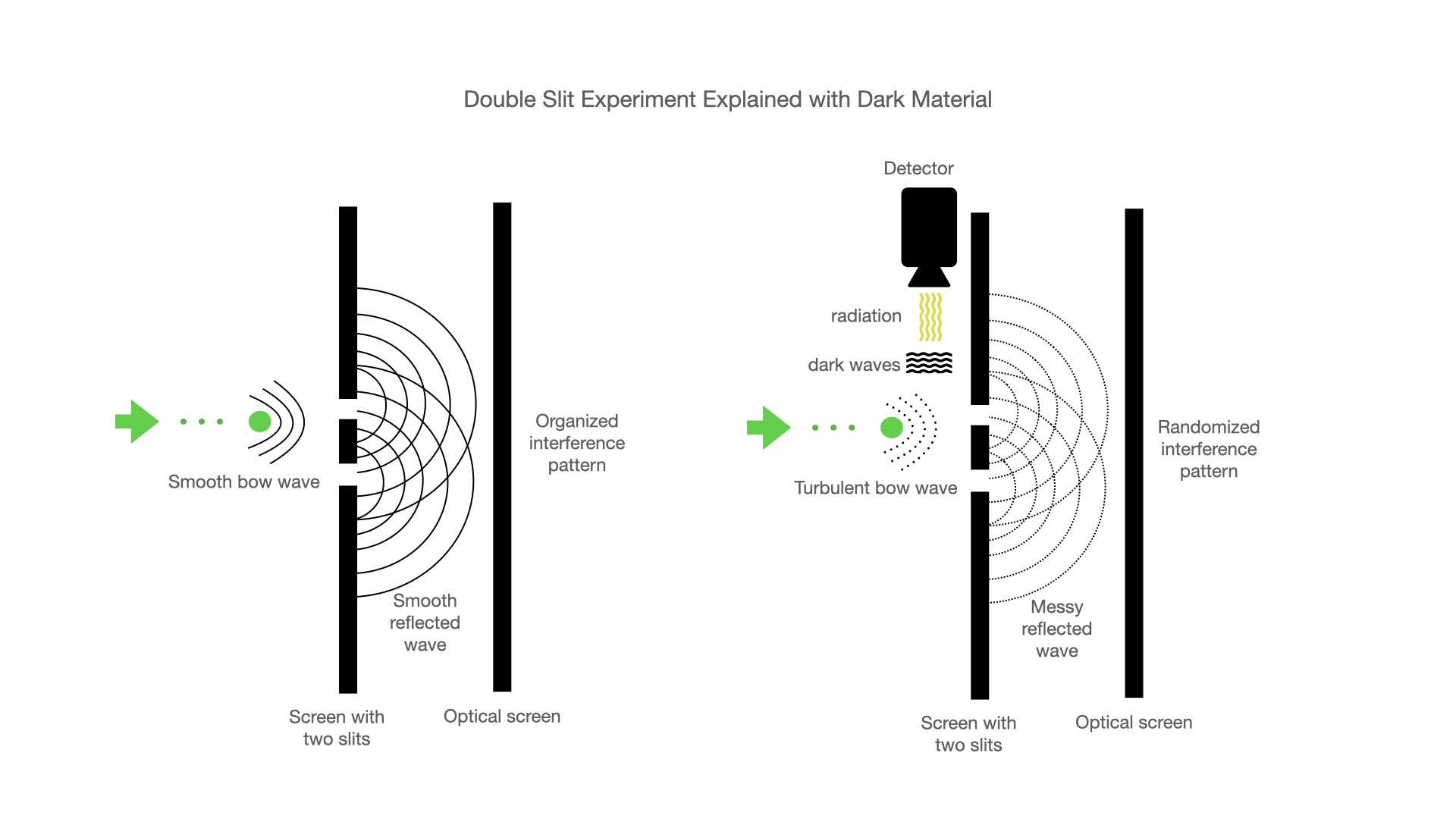
The Traditional Mystery: Particles apparently exist as waves that pass through both slits simultaneously, only “collapsing” into definite particles when observed. When detectors are placed at the slits, the interference pattern disappears, proving that observation fundamentally alters reality.
The Light Fluid Reality: Every particle travels surrounded by a bow wave in the dark matter substrate - exactly like a boat creating wake patterns in water. When this bow wave encounters the double slits, it passes through both openings simultaneously and creates interference patterns in the light fluid beyond the barrier.
Here’s the crucial sequence:
- Bow wave hits both slits and creates interference patterns in the dark matter
- Pressure from these patterns deflects the particle toward one slit or the other
- Additional pressure waves guide the particle’s path after it passes through its chosen slit
- Final impact location reflects the cumulative influence of all dark matter pressure effects
Why detectors eliminate the pattern: Placing detectors near the slits creates electromagnetic disturbances that generate turbulence in the local dark matter substrate. This “bad dark weather” scrambles the clean bow wave interference patterns, replacing orderly guidance with chaotic pressure variations.
The detection apparatus itself pollutes the delicate medium that creates the interference guidance system.
Bell’s Theorem: Dark Weather Correlation, Not Spooky Action
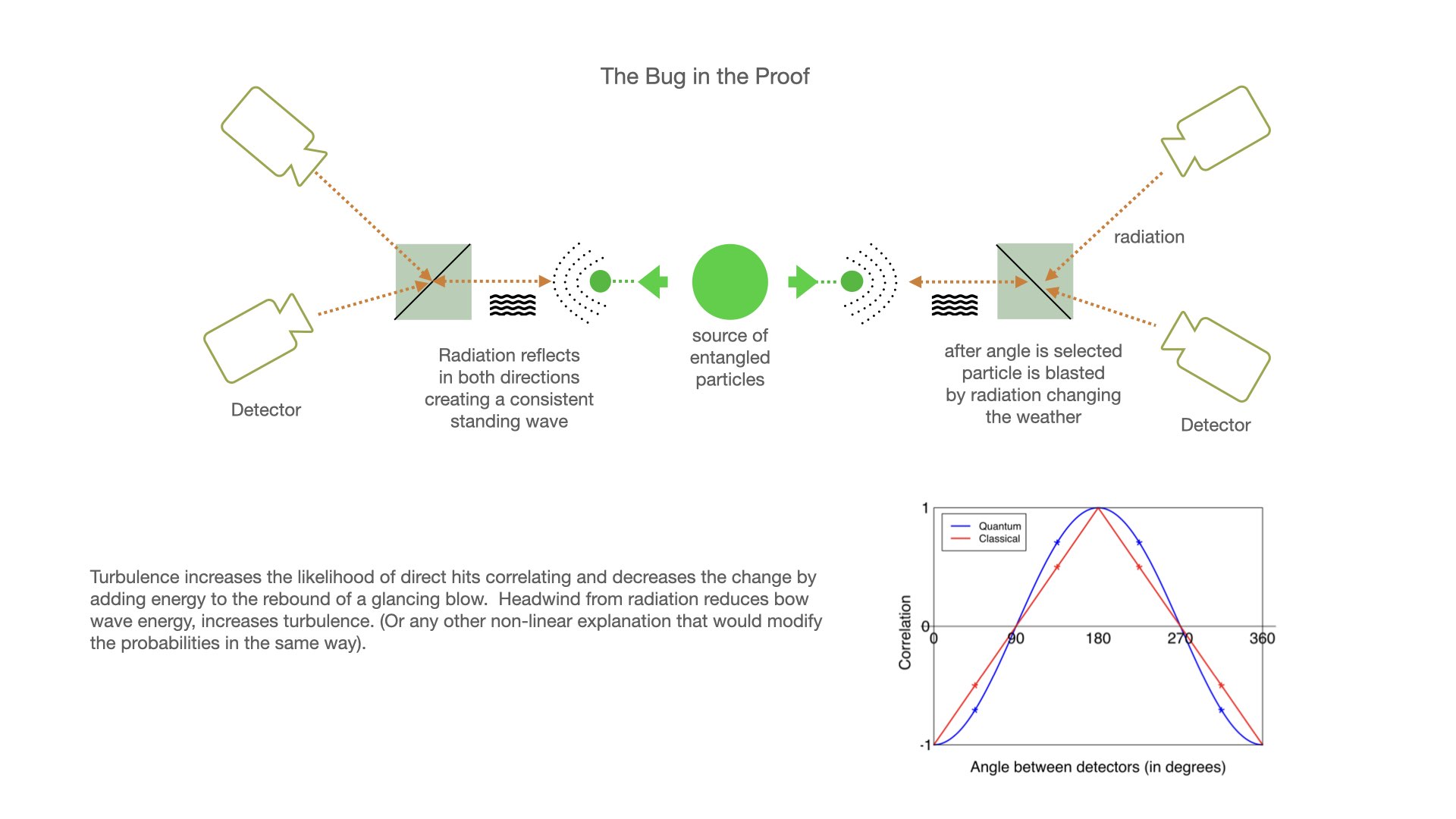
The Traditional Shock: Bell’s theorem seemed to prove that quantum entanglement requires instantaneous action at a distance, violating Einstein’s cherished locality principle. Experimental violations of Bell inequalities appeared to confirm that particles somehow communicate faster than light.
The Light Fluid Debugging: Bell’s analysis assumes ideal conditions - that particles interact with polarizing filters in perfectly clean, predictable environments. But real experiments operate in electromagnetic turbulence created by the apparatus itself.
Quantum Eraser: Dark Weather Channels, Not Retrocausality
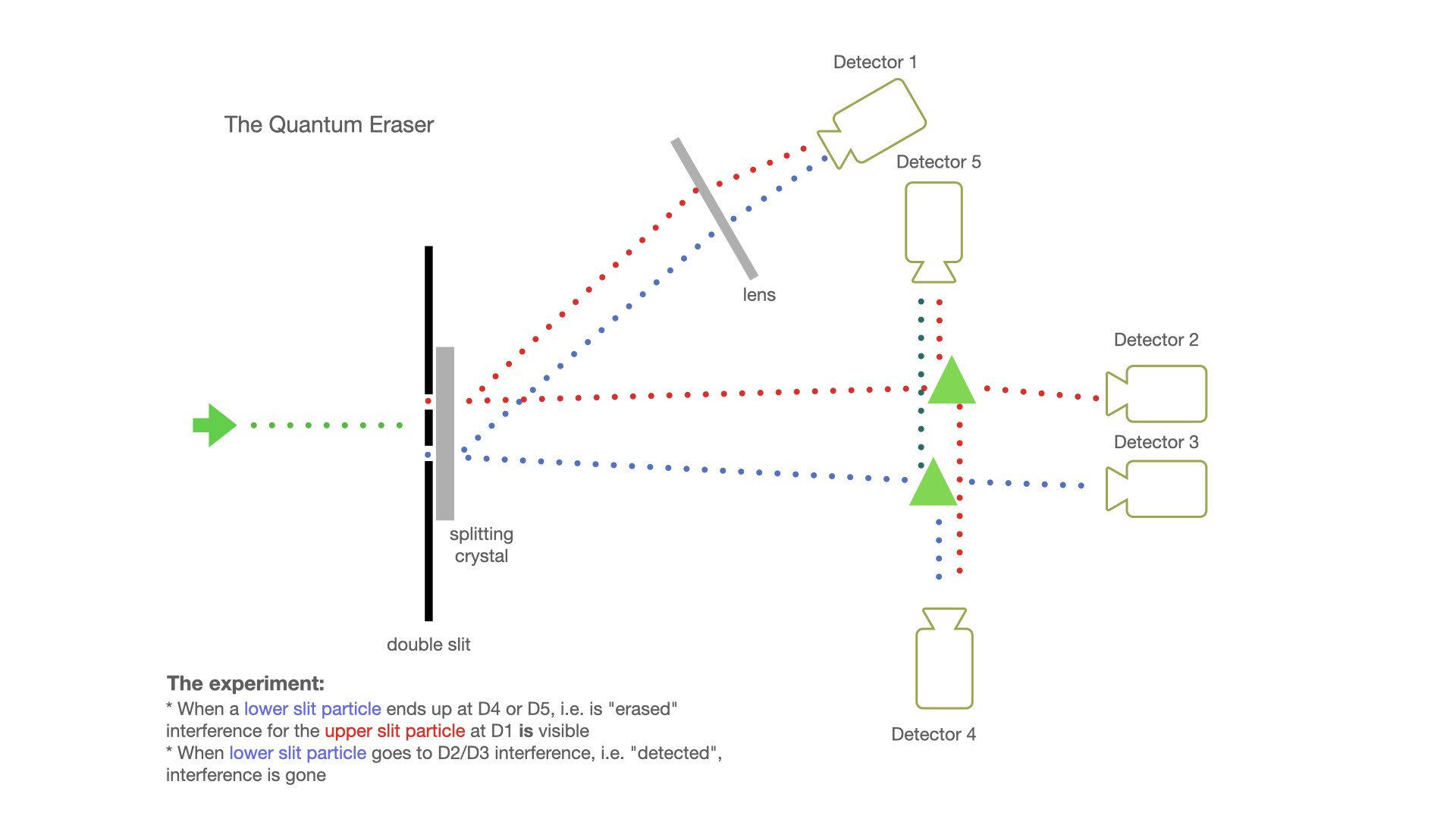
The Traditional Impossibility: The quantum eraser appears to demonstrate that future measurements can retroactively determine whether particles show wave or particle behavior - seeming to violate causality itself.
The Light Fluid Solution: The crystal and detector arrangement creates distinct “dark weather” conditions along different particle paths, established from the moment the apparatus is activated. Each detector continuously emits electromagnetic radiation and creates standing wave patterns in the dark matter substrate.
Path-Dependent Dark Matter Conditions:
- Direct detector paths: Columns of electromagnetic disturbance extend backward toward the slits, ensuring particles encounter turbulent conditions before reaching the double slit
- Indirect detector paths: Relatively calm conditions from weaker, reflected signals, allowing clean bow wave interference
Different particles travel through fundamentally different dark matter environments from the beginning, not because of future detection events, but because the apparatus pre-establishes these environmental conditions.
The Observer Effect: Apparatus Interference, Not Consciousness Magic
The quantum measurement problem dissolves once we recognize that every detection method involves electromagnetic apparatus that creates disturbances in the dark matter substrate.
The “observer effect” isn’t mysterious consciousness affecting reality - it’s measurement tools creating interference in an invisible medium we never suspected existed.
Einstein’s Vindication
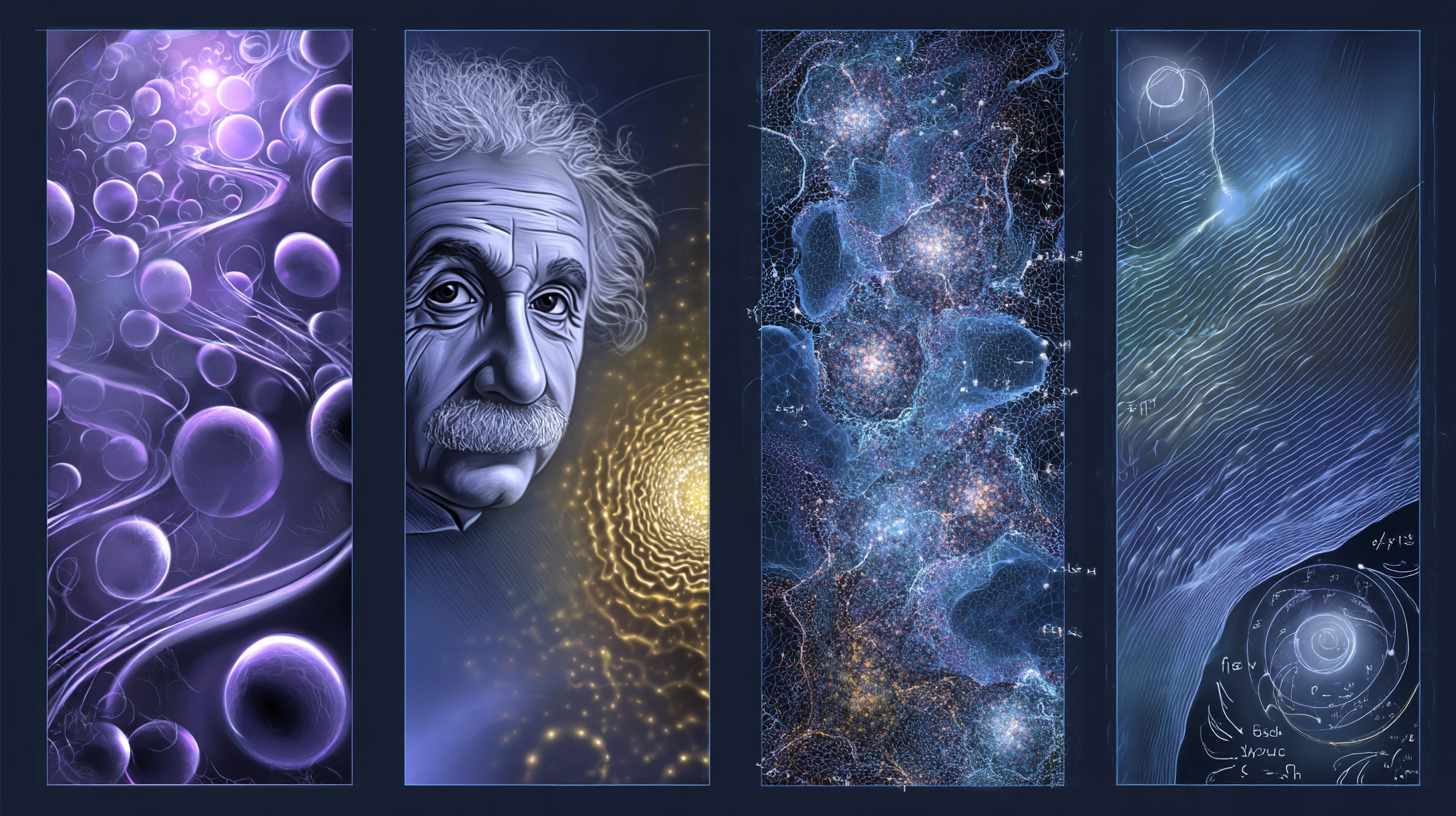
“God does not play dice with the universe.” Einstein’s intuition was absolutely correct. Particles have definite positions and velocities at all times, following deterministic paths through the dark matter substrate. The apparent randomness emerges from environmental turbulence created by our detection apparatus, not from fundamental indeterminacy in nature.
Bell’s theorem assumptions break down not because locality is violated, but because the “local” environment includes dynamic wave interactions in the complex dark matter substrate that connects all space.
The Paradigm Restoration
Once we recognize the dark matter medium, physics returns to familiar territory:
- Particles moving through a complex but comprehensible fluid
- Following deterministic paths influenced by pressure waves and boundary conditions
- Creating bow waves and orbital patterns we can visualize and understand
- Interacting through local cause-and-effect in the connecting medium
The universe operates like Einstein’s elegant clockwork - we simply lacked visibility into its most fundamental moving parts.
The “weirdness” was never in quantum mechanics. It was in our incomplete model that treated the dark matter substrate as empty space.
Bohr’s interpretation offered something irresistible to both scientists and funders: certainty wrapped in mystery. Rather than Einstein’s uncomfortable admission that we were missing crucial pieces of the puzzle, quantum mechanics provided precise predictions while declaring the underlying reality permanently unknowable. This psychological compromise - practical certainty without demanding true understanding - proved far more palatable than the debugging mindset that admits ’we don’t know what we don’t know yet.
The Revolutionary Implications: The Research Gold Mine
Immediate Research Opportunities
The beauty of the light fluid framework lies in its immediate testability. Unlike many theoretical physics proposals that require exotic conditions or decades-long experiments, dark matter physics suggests investigations we can pursue today using existing equipment and modified methodologies.
We’re not just proposing new theory - we’re opening entirely new fields of experimental science.
The Enzyme Specificity Mystery:
Why do enzymes find their exact substrates among millions of molecular options with such breathtaking precision? Test whether enzyme-substrate recognition involves dark orbital pattern matching by measuring the electromagnetic signatures during binding events. This could lead to designed enzymes with programmable specificity.
The Ultimate Prize - The Rosetta Stone:
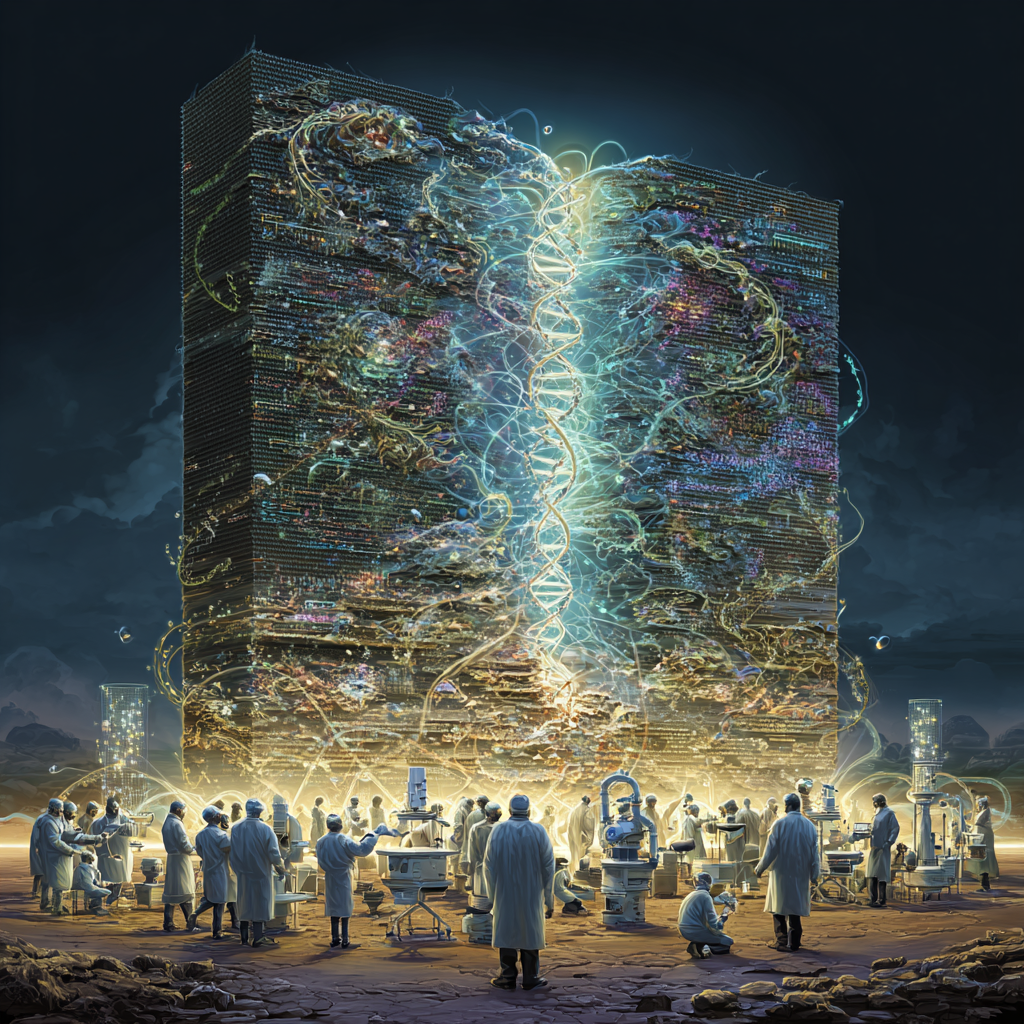
Map the cellular grammar system that translates DNA sequences into three-dimensional protein structures. If DNA operates as a spiral programming system that imprints angular momentum patterns onto amino acid chains, we should be able to:
- Predict protein folding from sequence analysis alone
- Design custom proteins with engineered properties
- Understand evolution as a creativity algorithm optimizing orbital pattern libraries
Materials Science: Engineering the Invisible Substrate
Superconductivity Through Dark Matter Density: Investigate whether superconducting materials create regions of modified dark matter organization. Our model predicts that superconductors maintain “clean” light fluid channels that allow electron flow with minimal resistance. This suggests new approaches to room-temperature superconductor design.
Magnetic Field Disruption and Restoration: Study the precise mechanisms by which physical disruption (hammer blows, heat) affects magnetic properties, and how exposure to organized magnetic fields restores them. This research could lead to programmable magnetic materials and rapid magnetic field healing technologies.
Phase Transition Pressure Dynamics: Examine material phase changes under extreme pressure for evidence of dark matter compression effects. The explosive energy release during certain phase transitions may represent dark matter substrate decompression - a new energy source we’ve never recognized.
Particle Physics: Debugging the Quantum Mysteries
Apparatus-Environment Interaction Studies: Systematically study how different detection apparatus configurations affect quantum experiment outcomes. Map the electromagnetic signatures created by various experimental setups and correlate them with “quantum behavior” observations.
Dark Matter Weather Monitoring: Develop sensitive instruments to detect and map “dark weather” patterns around particle accelerators. If electromagnetic apparatus creates turbulence in the dark matter substrate, this should be measurable and predictable.
Neutrino Detection Pattern Analysis: Reanalyze existing neutrino detection data for evidence of dark matter debris patterns. Our model suggests neutrinos are fragments of dark matter crusts expelled during nuclear processes. Detection patterns should reveal information about dark matter composition and dynamics.
Long Catcher Array Development: Design detection systems capable of capturing ultra-high-velocity particles traveling through laminar dark matter channels. This technology could detect cosmic “mail” from advanced civilizations using faster-than-light communication.
Geological and Climate Science: Planetary Engineering
Water’s Anomalous Properties Investigation: Study water’s unique behaviors (expansion when frozen, high heat capacity, surface tension) as manifestations of dark orbital systems. Understanding water’s dark matter interactions could revolutionize desalination, water purification, and climate management technologies.
Earthquake Prediction Through Pressure Monitoring:
If geological processes operate within dark matter pressure systems, we should be able to detect pressure buildup patterns that precede seismic events. This research could transform earthquake prediction from statistical guessing to precision forecasting.
Gulf Stream Stability Analysis: Study persistent oceanic currents as organized dark matter flow systems. Understanding how these “rivers in the ocean” maintain coherence across thousands of miles could reveal planetary-scale engineering principles and improve climate modeling accuracy.
Astrophysical Verification: Cosmic Engineering Revealed
Cosmic Web Mapping Projects: Use advanced telescopic surveys to map cosmic web filamentary structure for evidence of dark matter tunnel formation. The universe’s largest structures may be engineering artifacts created by explosive matter streams carving channels through the dark matter substrate.
Galaxy Rotation Analysis: Reanalyze galaxy rotation curves through dark orbital mechanics rather than exotic dark matter particles. Our model predicts specific velocity profiles based on dark matter pressure gradients and orbital momentum conservation.
Binary Star System Studies: Investigate mass transfer patterns in binary stars as evidence of dark orbital system interactions. Figure-8 matter streams between counter-rotating stellar systems should demonstrate dark orbital mechanics operating at astronomical scales.
Gravitational Wave Signature Analysis: Examine gravitational wave data for evidence of dark matter phase transitions during stellar collapse events. Massive dark matter decompression could create unique signatures distinguishable from conventional gravitational wave sources.
Consciousness Research: The Ultimate Frontier
Neural Network Dark Orbital Mapping: Investigate whether consciousness involves dark orbital pattern processing in neural networks. If thoughts are sophisticated dark matter information processing events, this should be detectable through sensitive electromagnetic field monitoring during cognitive tasks.
Meditation State Analysis: Study the measurable effects of different meditation practices on local electromagnetic environments. If consciousness can consciously program dark orbital patterns, advanced practitioners should create detectable field modifications during deep meditative states.
Group Consciousness Coordination: Research the mechanisms behind documented group consciousness effects - how large numbers of people can achieve surprising coordination without conventional communication. This may involve shared dark matter information processing across multiple neural networks.
Technology Development: Engineering the Future
Light Fluid Communication Systems: Develop faster-than-light communication using organized dark matter channels. If information can travel through laminar flow regions at unlimited velocities, this technology could enable instantaneous interstellar communication.
Biological-Electronic Interfaces: Create direct interface systems between biological dark orbital processing and electronic computation. Understanding cellular information processing could enable computers that think like living systems.
Therapeutic Dark Orbital Modification: Design medical devices that can consciously reprogram disrupted dark orbital patterns in biological systems. This could treat everything from traumatic brain injury to autoimmune disorders through direct information system repair.
The Convergence Revolution
Perhaps most significantly, this framework suggests that the boundaries between physics, chemistry, biology, geology, and consciousness studies are artificial divisions in what is fundamentally a unified system. The dark matter substrate provides a common foundation where:
- Mechanical principles operating at quantum scales emerge naturally into complex biological phenomena
- Cellular information processing connects directly to planetary and cosmic systems
- Consciousness becomes an engineering problem rather than a philosophical mystery
- Life and intelligence represent natural expressions of universal organizational principles
The Scientific Renaissance
We stand at the threshold of a scientific renaissance as profound as the shift from alchemy to chemistry, from astrology to astronomy. By recognizing dark matter as the universe’s active substrate rather than passive scaffolding, we transform every field of study:
- From studying isolated phenomena → to understanding integrated systems
- From mysterious quantum behaviors → to visualizable fluid mechanics
- From consciousness as anomaly → to consciousness as natural emergence
- From separate scientific disciplines → to unified investigation of reality’s substrate
The Research Imperative
The next phase requires unprecedented collaboration across traditionally separate fields. Physicists, biologists, materials scientists, geologists, and consciousness researchers may discover they’re studying different aspects of the same underlying dark matter phenomena.
Every laboratory becomes a potential site for breakthrough discoveries. Every experiment offers opportunities to detect the invisible substrate that makes everything else possible. Every researcher can contribute to humanity’s greatest debugging project: understanding how the universe actually works.
The universe’s greatest mysteries may yield not to more exotic mathematics, but to patient observation of the invisible medium that connects and coordinates everything we see.
Are you ready to debug reality? 🌌✨*